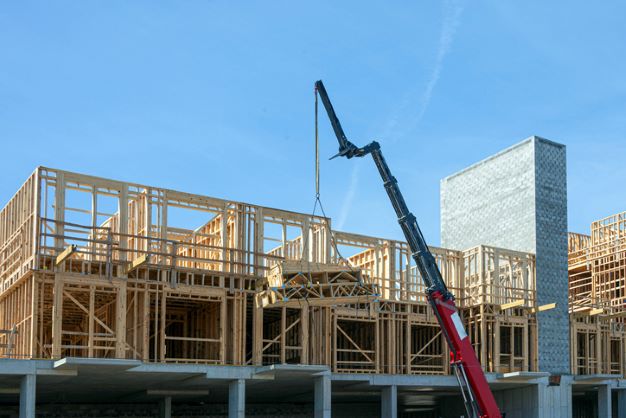Santa Monica finally received approval from the state’s Housing and Community Development Department (HCD) for its Sixth Cycle Housing Element last October. But last Wednesday evening, February 22, the city council held a special session solely dedicated to revisiting the Housing Element. It continued to a portion of the agenda this Tuesday night.
Overall, staff warned last Wednesday that while currently in compliance, the plan can fall out of compliance if the city fails to meet its stated objectives by their respective deadlines. This goes to the issue of feasibility. Goals may be stated and be approved, but will the housing projects pencil out for developers during the development process leading up to construction?
City staff recommended that by-right approvals for certain housing projects, set to sunset on May 31, be made permanent. They include:
- 100 percent affordable housing projects
- Moderate Income Overlay projects
- Housing projects from the Fifth Cycle Housing Element that contain at least 20 percent low-income affordable units on site
- Streamlined housing projects
- Housing projects outside of downtown on less than one acre of land
- Housing projects downtown of less than 90,000 square feet
These designations mean that they would not be subject to a public hearing. But they would require a community meeting and public posting.
Based on Planning Commission discussion and in response to state legislation, city staff also recommended changes that included:
- Eliminating the tiered Zone system for height and density requirements for downtown development
- Creating a uniform 15 percent affordability requirement citywide in response to state legislation that would subject any project with a higher percentage of affordable units to review by HCD
- Currently, there are more than 5,200 units at various stages of development under a 15 percent affordability requirement, which staff says is evidence that it can work
- Rezoning in commercial corridors to allow for more height and floor area ratio (FAR) in housing projects
- Allowing housing on the ground floor outside of the Bayside Zone, which is 2nd, the 3rd Street Promenade, and 4th streets, as well as Main Street and Montana Avenue
Councilmember Phil Brock questioned why the city would lower its threshold for affordable housing requirements from 20 to 15 percent given it’s been a stated goal to produce as much affordable housing as possible versus market-rate housing. The staff provided responses that ultimately boiled down to the feasibility argument. While the goal is more affordable units, they want to be sure that projects are able to pencil out and actually get built.
The marathon seven-plus hour-long session ultimately resulted in the council providing the following direction to city staff, with the body agreeing to continue the item as part of the February 28 regular meeting agenda:
- Accelerate housing production by streamlining 100% affordable projects, moderate-income housing projects, and housing projects with no more than 25% non-residential floor area on sites up to one acre in size.
- Eliminate the existing tier system and rezone to increase building heights and floor area ratio standards for housing projects across the City.
- Encourage the production of affordable housing by requiring housing projects citywide to provide 15% of units as on-site affordable housing units.
- Update the City’s Density Bonus ordinance for consistency with State law
- Expand the application of Assembly Bill 2097 by eliminating minimum parking requirements for all housing projects not within the R1 zoning district.
- Incentivize the production of moderate-income housing by creating a Moderate-Income Housing overlay.
- Establish an ordinance to implement Senate Bill 9 (SB9), which requires the administrative approval of lot splits and duplexes on parcels zoned for single units and provides additional development potential for larger parcels. In addition, incentivize SB9 projects by waiving the affordable housing fees but applying other development impact fees.
- Establish limits on lot consolidation in the City’s Neighborhood Commercial zoning districts located on Main Street, Montana Avenue, Pico Boulevard, and Ocean Park Boulevard, except for sites already identified on the Suitable Sites Inventory, to help preserve small-scale businesses in these commercial districts while also allowing potential redevelopment of existing larger parcels.
The council returned to the Housing Element Tuesday to discuss just a few more outstanding items that were in the red-lined draft that was made by staff. Councilmember Jesse Zwick seemed to humorously accept most of the blame for revisiting the draft, as he had the most questions remaining.
Zwick asked staff why more projects are finding themselves under Administrative Review rather than Discretionary Review, where there is more of a public process and residents can weigh in on developments. Staff responded that a lot of discretionary projects were really bound by state law, and it made no sense to put the public through a protracted process on particular projects that would ultimately hold up against public appeals.
But Zwick pushed back a bit, saying, “I’m happy to see we’re putting this forward as a program, and I think the length of time and certainty around approvals is something that can constrain important investments in our city.” He continued, “The thing that worries me a little is that while I see that moving from the discretionary to the administrative process we might see fewer public hearings or commission meetings, I don’t see anything in the proposed changes that guarantees this process will actually proceed in a more timely fashion. I see it shifting from one realm to another, but I’m not seeing a real concrete set of expectations that applicants can rely on in terms of when they’re going to get their project approved.”
Planning Manager Jing Yeo responded that while there were several robust discussions among the planning commission, “For sure it saves time” coming through the Administrative Review. She added, “We’re not spending time writing staff reports, agendizing the items, analyzing it.” She also explained that under the relatively new Senate Bill 330, the state mandates particular timeliness be followed that has helped expedite the process. She finally assured the council, “We always try to move these projects forward as quickly as possible.”
Zwick was undaunted. Simply not convinced timelines can be met, he suggested perhaps adding a developer fee that could fund more planning staff to work on approvals, and adding specific timeline requirements into the Housing Element.
Councilmember Phil Brock doesn’t want the speed of one process to slow aspects of another. “I understand exactly what Councilmember Zwick is asking for, and I’d like to see outside constraints, too,” said Brock. “But I don’t want us to then neglect something else.”
Brock further wanted to know how many days it would take planning staff to approve the average-sized project of 60 units. At that point, City Manager David White intervened, saying staff was being asked for specifics they need time to gather.
Mayor Gleam Davis then asked Zwick if he would be comfortable directing staff to come up with some language that could be placed in the Zoning Ordinance. He agreed to amend a motion he had made asking for specifics to direct staff to include a variety of timelines in their zoning updates. It passed unanimously.
Zwick also asked staff why the city is specifically looking at surface parking lots for special building incentives. Yeo clarified that the parking lots the city is talking about are residentially zoned lots, so the idea was to not displace existing housing units. She says these are the parking lots that back into street-facing commercial properties, and they are underutilized.
“This is the type of place we should be most encouraging residential housing projects, and I just don’t see these largely R2-zoned lots doing that.” Zwick said, adding, “I would propose an overlay that would say these surface parking lots that directly abut commercially zoned spaces on our boulevards, that they receive the same commercial zoning as spaces they abut provided they be redeveloped into housing projects.” This means the entire site would get the same development standards as the commercial zone.
Councilmember Lana Negrete expressed concern that planting housing on surface lots between commercial and existing residential may be somewhat disruptive and imposing on the existing residential. It didn’t seem to sway her when staff informed her that the commercial owners would have to replace 50 percent of the parking they gave up to build housing.
Mayor Davis then moved staff to bring back alternate zoning as to the level of housing projects abutting commercial uses. But the whole idea went down 4-3, with Negrete, Brock, and Councilmembers Oscar De La Torre and Christine Parra joining in opposition.
Next, Councilmember Caroline Torosis brought up the issue of transferring housing requirements to other jurisdictions. In recent weeks, a story came to light that someone in Santa Monica government may have brought a proposal to the City of Palmdale to pay them to build housing that would satisfy Santa Monica’s share of the Sixth Cycle Housing Element. The scandalous idea has buzzed about in the community since. Torosis asked if it would be legal under California law for one city to make this offer to another city. The city attorney’s quick answer was, “No it would not.”
Torosis then asked if anyone on city staff initiated such a discussion with the City of Palmdale. City Manager White said no. Torosis then asked how the issue came to the city’s attention given it was reported on in the media. Said White, “I can’t explain why it was reported on but it came to us at the request of their, I think at the time, their Interim City Manager had requested to meet with city officials to talk about their interest in talking about their housing needs and our housing needs.” White did cop to the fact that the city met with the folks from Palmdale.
“Did we commit to anything at that meeting?” asked Torosis. White explained no, and for two reasons, the first being nothing in the Housing Element allows for such a discussion, and second, that the staff could only act on council direction and they had not been given any such direction.
De La Torre clarified that he believes Senator Ben Allen was considering legislation that would let cities partner to meet their housing requirements. He asked the city attorney if it would be illegal for him to follow up with Senator Allen. City Attorney Doug Sloan said he had a First Amendment right to do so, so long as he didn’t suggest to the senator that he was speaking on behalf of the city or his colleagues.
That concluded the two weeks of discussion on the Housing Element.
Photo by ribeirorocha
Stay informed. Sign up for The Westside Voice Newsletter
By clicking submit, you agree to share your email address with Westside Voice. We do not sell or share your information with anyone.








